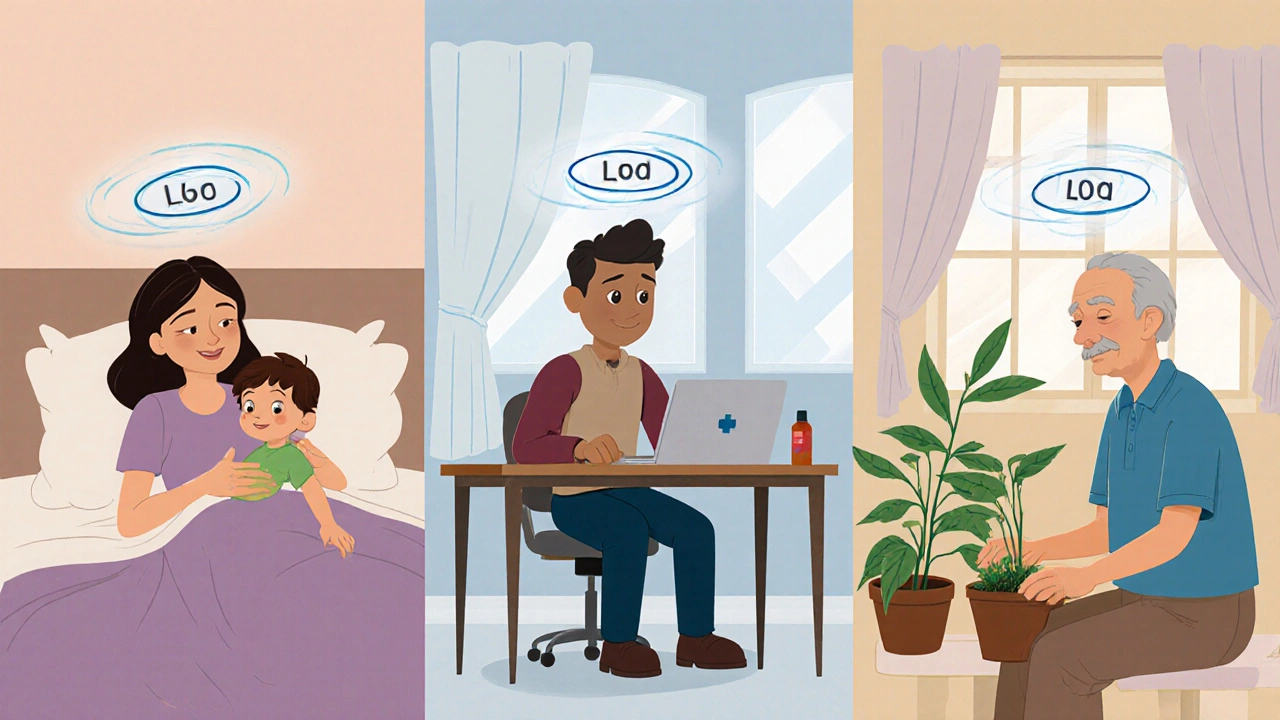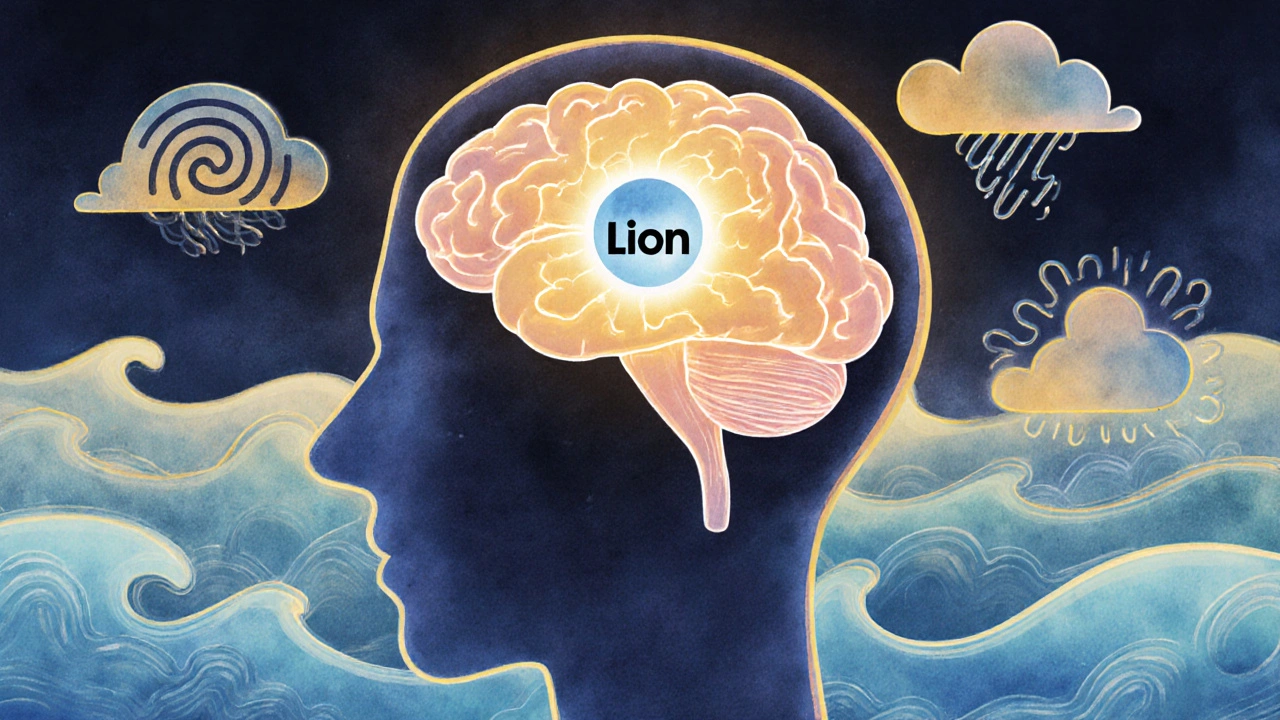When you think of lithium, you might picture batteries in your phone or electric cars. But for over 70 years, a tiny amount of this simple metal has been saving lives in a very different way - by stabilizing the wild swings of bipolar disorder. It’s not flashy. It doesn’t come in fancy packaging. And yet, lithium remains the most studied, most effective, and still the most widely prescribed mood stabilizer in the world.
What Lithium Actually Is
Lithium is a soft, silvery-white metal. It’s the lightest of all metals and reacts violently with water - which is why you’ll never find it sitting around in its pure form. In medicine, doctors use lithium in the form of lithium carbonate or lithium citrate - salts that dissolve safely in the body. These compounds release lithium ions, which travel through the bloodstream and cross into the brain.
It’s not a sedative. It’s not an antidepressant. It doesn’t make you feel ‘normal’ all the time. What it does is reduce the intensity and frequency of manic and depressive episodes. People on lithium don’t always feel ‘better’ - they just don’t crash as hard or fly as high. And that difference? It’s life-changing.
How Lithium Works in the Brain
No one knows exactly how lithium works. That’s not because scientists haven’t tried - they’ve spent decades studying it. But the brain is messy, and lithium affects multiple systems at once.
It influences neurotransmitters like serotonin and dopamine, but not in the way SSRIs do. Instead, it seems to calm overactive nerve signaling during mania and boost protective pathways during depression. One of the clearest effects is on a molecule called inositol, which plays a role in how brain cells communicate. Lithium slows down the recycling of inositol, which may help stabilize the electrical activity that goes haywire in bipolar disorder.
It also increases a protein called BDNF - brain-derived neurotrophic factor - which helps neurons survive and grow. That’s why long-term lithium use is linked to a lower risk of dementia and even a longer lifespan in people with bipolar disorder. It doesn’t just treat symptoms. It may protect the brain.
Why Lithium Is Still the Gold Standard
There are newer drugs - anticonvulsants like valproate, atypical antipsychotics like quetiapine. All of them have their place. But none match lithium’s track record.
A 2023 meta-analysis of 52 studies involving over 15,000 patients found lithium was the only medication that significantly reduced the risk of suicide in bipolar disorder. The reduction? Nearly 80%. No other mood stabilizer comes close.
It also prevents both mania and depression equally well. Most other drugs work better for one than the other. Lithium works for both. And it’s cheap. A month’s supply costs less than $10 in many countries. That’s not just a win for patients - it’s a win for healthcare systems.
And here’s something most people don’t realize: lithium has a unique ability to reduce the risk of relapse over decades. People who stay on lithium for five years or more have a much lower chance of returning to hospital than those who switch to newer drugs after a few episodes.
Who Gets Prescribed Lithium?
Lithium isn’t for everyone. It’s most often prescribed for people with bipolar I disorder - those who’ve had full-blown manic episodes. It’s also used when depression is severe and doesn’t respond to antidepressants alone.
It’s not the first choice for rapid cycling bipolar disorder (four or more mood episodes in a year), though some patients still benefit. It’s rarely used for bipolar II, unless depression is the main problem and other treatments have failed.
Doctors usually start lithium after one or two manic episodes. It’s not a quick fix - it takes 1 to 3 weeks to start working. But once it does, the change is often noticeable. Family members report: ‘They’re not as impulsive. They sleep better. They don’t spend money like crazy anymore.’

The Side Effects - And How to Manage Them
Lithium isn’t side-effect free. But most are mild and manageable. The most common ones include:
- Tremors in the hands - often goes away after a few weeks or can be reduced with a low dose of propranolol
- Increased thirst and frequent urination - your kidneys are working harder to flush out lithium
- Weight gain - about 10-15 pounds on average, but varies by person
- Thyroid issues - lithium can lower thyroid hormone levels, so regular blood tests are needed
- Acne or skin dryness - less common, but real
The biggest risk? Toxicity. Lithium has a narrow therapeutic window - the difference between the right dose and a dangerous one is small. Too much can cause confusion, vomiting, seizures, or even coma.
That’s why blood tests are non-negotiable. When you start lithium, you’ll get tested every week for the first month. Then every 3 months. Your doctor will check your lithium blood level (target range: 0.6 to 1.0 mmol/L) and your kidney and thyroid function. Dehydration, salt intake, and certain medications (like NSAIDs or diuretics) can spike lithium levels. Drink water. Don’t go on extreme low-salt diets. Tell your doctor about every new medicine you take.
Lithium vs. Other Mood Stabilizers
Here’s how lithium stacks up against the most common alternatives:
| Medication | Reduces Mania | Reduces Depression | Reduces Suicide Risk | Cost (Monthly) | Requires Blood Tests? |
|---|---|---|---|---|---|
| Lithium | Yes | Yes | Yes (80% reduction) | $5-$15 | Yes |
| Valproate | Yes | Moderate | No clear evidence | $20-$50 | Yes |
| Carbamazepine | Yes | Moderate | No clear evidence | $30-$70 | Yes |
| Quetiapine | Moderate | Yes | Some reduction | $100-$300 | No |
| Lurasidone | Mild | Yes | Not studied | $200-$500 | No |
Lithium wins on suicide prevention, cost, and long-term brain protection. Newer drugs win on convenience - no blood tests, fewer side effects. But if you want the most complete protection, lithium is still the only option that delivers on all fronts.
What Happens If You Stop Lithium?
Stopping lithium suddenly is one of the most dangerous things a person with bipolar disorder can do. Within days, mania or depression can return - sometimes worse than before. This is called rebound mood instability.
Studies show that over 60% of people who quit lithium without medical supervision have a relapse within a year. That number drops to under 20% if they taper off slowly under a doctor’s care.
Some people stop because of side effects. Others feel fine and think they don’t need it anymore. But bipolar disorder isn’t something you ‘outgrow.’ It’s a lifelong condition that needs ongoing management. Lithium isn’t a cure - it’s a shield.

Real Stories, Real Impact
Anna, 38, from Cape Town, was hospitalized three times in five years before starting lithium. She’d go from sleeping 16 hours a day to running out of money on impulse buys, then spiraling into guilt and silence. After three months on lithium, she says: ‘I didn’t feel happy. But I felt steady. I could hold a job. I could be a mom.’
James, 52, stopped lithium after 12 years because he didn’t like the tremor in his hands. He switched to an antipsychotic. Six months later, he had a full manic episode, lost his house, and ended up in jail for a week. He’s back on lithium now. ‘I’d rather have shaky hands than a broken life,’ he says.
When Lithium Isn’t the Right Choice
Lithium isn’t for everyone. It’s usually avoided if you have:
- Severe kidney disease
- Hashimoto’s thyroiditis (unless closely monitored)
- Heart conditions like Brugada syndrome
- Pregnancy (especially first trimester - it can affect fetal heart development)
For pregnant women, alternatives like lamotrigine are often preferred. But for women who’ve had multiple episodes and are stable on lithium, doctors may continue it with extra monitoring.
Teens and young adults can take lithium, but they need careful follow-up. Weight gain and acne can be tough at that age. But the risk of suicide - which peaks in late teens and early 20s - makes lithium worth considering.
What to Do If You’re Considering Lithium
If you or someone you care about has bipolar disorder and hasn’t tried lithium, here’s what to do:
- Ask your psychiatrist: ‘Has lithium been considered?’ Don’t assume it’s outdated.
- Get a baseline blood test: kidney function, thyroid levels, electrolytes.
- Start low. Most people begin with 300 mg once or twice a day.
- Be patient. It takes weeks to work.
- Track your mood daily. Use a simple app or journal.
- Stick with it for at least 6 months before deciding if it’s right for you.
And if you’re already on lithium? Don’t skip your blood tests. Drink water. Tell your doctor about every new medicine - even over-the-counter painkillers. Lithium is simple, but it demands respect.
Final Thought: The Quiet Hero
Lithium doesn’t have a marketing budget. It doesn’t appear in TV ads. It’s not trendy. But it’s been keeping people alive for over 70 years. It’s the oldest, cheapest, and most effective tool we have for one of the most dangerous mental illnesses.
It’s not perfect. But when it works, it doesn’t just change your mood - it changes your life.
Is lithium addictive?
No, lithium is not addictive. It doesn’t create cravings or a high. People don’t develop tolerance to it the way they do with benzodiazepines or opioids. Stopping it doesn’t cause withdrawal symptoms - but it can cause a return of bipolar symptoms, which is why you never quit cold turkey.
Can you drink alcohol while taking lithium?
It’s not recommended. Alcohol can dehydrate you, which raises lithium levels and increases the risk of toxicity. It can also worsen depression and interfere with mood stability. If you drink, do so very rarely and in small amounts - and always tell your doctor.
Does lithium cause weight gain?
Yes, about half of people gain some weight - usually 5-15 pounds. It’s not because lithium makes you hungry. It’s because it affects how your body holds onto water and may slow metabolism slightly. Eating well and staying active helps. Some people switch medications if weight gain becomes a major issue.
How long do you need to take lithium?
Most people take lithium for years, often for life. Bipolar disorder is chronic. Stopping increases relapse risk dramatically. If you’ve been stable for 5+ years, your doctor might consider slowly lowering the dose - but never stop without supervision.
Can lithium damage your kidneys?
Long-term use can affect kidney function in some people, but serious damage is rare with proper monitoring. Regular blood tests catch changes early. Most people on lithium have normal kidney function for decades. The risk of kidney problems is far lower than the risk of suicide or hospitalization from untreated bipolar disorder.
Is lithium safe for older adults?
Yes, but with extra care. Older adults are more sensitive to lithium’s effects and more prone to dehydration and kidney changes. Doctors usually start with lower doses and monitor more closely. Many seniors take lithium safely for years with no issues.

